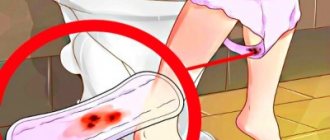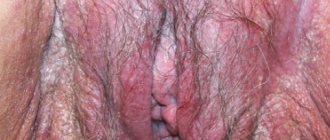What is candidiasis, features of the disease
Thrush is an infectious fungal disease affecting the external genitalia and vagina.
Pathology develops due to the spread of candida fungus. It is necessary to indicate that this fungus is a component of the vaginal microflora, however, in the presence of certain reasons, its number increases sharply, which is the source of the development of thrush. The disease causes a lot of trouble and significantly impairs the quality of life. In addition to women, the disease is often diagnosed in men. In general, thrush in representatives of the stronger sex is asymptomatic. But often they are the carrier and spreader of the disease. A more accurate diagnosis is made by a doctor based on a smear examination. If the disease is not treated in time, thrush can become chronic and spread to the bladder and intestines.
https://youtu.be/HX8DySp-UUU
Diagnostics
Before treating leucorrhoea, it is necessary to determine the cause of its appearance. Initially, a visual examination is carried out in the gynecologist's office. The doctor prescribes tests and asks leading questions.
Before visiting a gynecologist, the patient should prepare information about the duration of the menstrual cycle, the amount and nature of leucorrhoea.
The gynecologist takes a smear to examine the flora. It allows you to identify the presence of pathogenic microorganisms, epithelium, the number of erythrocytes and leukocytes. If necessary, blood and urine are donated for testing.
Causes and factors influencing the occurrence of the disease
The main reasons that influence the development of this disease are:
- Excessive and prolonged use of antibiotics
- Reduced immunity
- Hormonal disorders
- Use of birth control pills, especially for women
- Constant douching
- Excess weight
- Poor quality linen.
In addition, thrush can also occur against the background of diseases such as diabetes, endocrine disorders, etc. Another reason for the appearance of thrush is considered to be poor nutrition. This applies to those women who consume large amounts of sweets, fatty and spicy foods, carbonated drinks, etc.
Therefore, in the treatment of the disease, important importance must be given to diet. With proper treatment and proper nutrition, symptoms of thrush such as curdled discharge, itching and burning go away quite quickly.
Treatment of atypical discharge
Curd-like discharge without itching is treated depending on the disease that is accompanied by similar symptoms. In some cases, therapeutic measures extend to the sexual partner. Let's look at the most common pathologies and medications that are usually prescribed by specialists:
- Gonorrhea. Requires taking antibacterial agents - Ciprofloxacin, Ofloxacin, Ceftriaxone.
- Trichomonosis. Therapy is carried out using special medications: Klion, Trichopolum, Tinidazole.
- Chlamydia. Antibiotics belonging to the tetracycline series are considered the most effective.
- Mycoplasmosis, ureaplasmosis. Treated with Doxycycline and Tetracycline.
White and pink discharge occurs due to a variety of reasons, and accordingly, treatment methods will differ. It is quite difficult for a non-specialist to understand them.
Main signs of candidiasis
The characteristic symptoms of candidiasis in women are white, cheesy discharge, which can be easily seen on underwear. At the very beginning of the disease, itching occurs, which increases over time, then a burning sensation appears in the external genitalia and in the vagina. In addition, thrush causes an unpleasant sour smell, which makes many ladies feel uneasy. Although often this smell can only be heard by the woman herself. In addition to the above symptoms, there is painful urination, a white coating on the vagina, and discomfort.
There are cases when cheesy discharge and itching can warn of more serious diseases, for example, sexually transmitted diseases.
White curdled vaginal discharge in women: causes and treatment
2.1 Treatment
Treatment of vaginal candidiasis involves the use of antifungal drugs. Most of the new generation of products are available in different forms - tablets, suppositories or creams.
Drugs such as ciclopirox, clotrimazole (also sold under the names Candibene and Kanison), nystatin (Macmiror), and natamycin have proven their effectiveness.
Some experts believe that Nystatin itself is an outdated remedy, but in the complex drug Macmiror it shows better results. For mild forms of the disease, a single dose of Fluconazole in tablets (capsules) is also possible.
Thrush often appears during pregnancy. Expectant mothers do not risk taking radical remedies, but doctors believe that even in the early stages, drug treatment of candidiasis is necessary, since as the disease progresses, the consequences for the fetus can be no less dangerous than the most active drugs. It is especially important to treat pathology in the later stages, otherwise the child may become infected during the passage of the birth canal. Clotrimazole is a fairly safe and effective medicine during pregnancy.
Some doctors suggest using a method such as introducing a solution of borax in glycerin into the vagina. This is an outdated and ineffective method, just like treatment with a soda solution, since it changes the pH of the vagina, and over time, ideal conditions are created there for the development of fungi.
Treatment with folk remedies for thrush without the use of medications cannot be called effective. At home, it is permissible to use only herbal decoctions for douching. We recommend a composition based on white clasp , which can be prepared according to the following recipe:
- 1. Take 2 tbsp. l. herbs per glass of boiling water.
- 2. Bring to a boil again.
- 3. Leave on low heat for 5-10 minutes.
- 4. Wait for it to cool down.
This decoction can also be used orally - a glass three times a day.
Brown discharge
Brown discharge in women between the monthly cycle can be symptoms of various pathologies and ailments. For the most part, they are caused by:
- Gynecological inflammatory diseases
- Hormonal imbalance
- Some genital injuries
- Tumors of the uterus and appendages
- Cervical erosion
- Various types of cysts
Also, sexually transmitted diseases are often accompanied by brown discharge, pain during urination and sexual intercourse, and an unpleasant odor. Such diseases include: chlamydia, ureaplasmosis, mycoplasmosis, trichomoniasis, etc.
If brown discharge with an odor appears, you should stop having sexual intercourse and consult a doctor.
During pregnancy, brown discharge is also sometimes observed; usually, it is considered a pathology and can threaten the health of the woman and the unborn baby.
What discharge is considered natural?
Each woman has her own idea of normal leucorrhoea, which corresponds to the individual characteristics of the body. The physiological norm is indicated by the following signs of discharge:
- a small amount of liquid;
- absence of a strong strong odor;
- clear or white discharge with a slight yellowish tint;
- leucorrhoea has a liquid consistency that resembles mucus;
- the skin and mucous membranes are not exposed to irritating factors, there is no discomfort.
The volume and consistency of liquids will not always be the same. Much more of them are released in the middle of the cycle, in the presence of sexual arousal, as well as during lactation.
Cheesy discharge without odor
Although vaginal discharge is considered normal for women, cheesy, odorless discharge is considered a sign of certain problems or disorders.
- Such discharge, accompanied by itching, may signal atrophic vaginitis. It is often diagnosed in older women; this pathology is accompanied by a burning sensation, the vaginal mucosa is pale, and brown discharge mixed with blood and an unpleasant odor may appear.
- This condition in women can also be observed with bacterial vaginitis; it is provoked by certain bacteria that are present in the vaginal microflora. Under favorable conditions for their growth, they actively reproduce and provoke disease. There is discharge, itching, redness of the mucous membrane
- Often, odorless, cheesy white discharge appears in women during pregnancy. This is explained by the fact that the body tries in every possible way to protect the fetus, the body’s defenses decrease, and such disorders occur.
Reason for appearance
The causes of curdled discharge in women do not always imply infection of the genital tissues. But this clearly indicates that the vaginal microflora is not in order. Most often, white, cheesy, odorless discharge is caused by an imbalance of biocinosis and a change in acidity. This means that fungal bacteria have increased dramatically in number.
A small number of such microorganisms is useful for creating normal vaginal microflora. But if they sharply increase in number, this can lead to the development of candidiasis. As a result, discharge appears in the form of gruel or cottage cheese. White flakes may be accompanied by a watery, rich substance.
Active growth of fungi is most often provoked by the following factors:
- Sudden weight gain.
- Hormonal imbalance.
- Wearing underwear made of synthetic material.
- Dermatitis in the intimate area.
- Frequent changes of sexual partners.
- Uncontrolled or long-term use of antibiotics and other medications.
- A sharp decrease in the protective function of the body.
Experts have come to the conclusion that if white cheesy discharge in women was provoked by these factors, then it will go away on its own when the pathogen is eliminated, and gynecological intervention in treatment will not be required.
An imbalance in nutrition can cause white clots that look like cottage cheese. Rejection of the curdled secretion can be caused by excessive consumption of fatty and sweet foods, as well as coffee. That is why, if such discharge appears, you first need to adjust your daily diet.
It is very easy to identify thrush. To do this, you need to go to a specialist and take a smear for analysis.
The reasons for the development of thrush are:
- Hormonal imbalance.
- Uncontrolled use of hormonal drugs.
- Using personal hygiene products or toilet paper with a lot of fragrances or dyes.
- Use of antibiotics.
- Constant stressful situations.
- Frequent douching with antiseptics: baking soda, chamomile decoction or potassium permanganate. All of these substances contribute to changes in the acid-base balance and kill beneficial lactobacilli. As a result, pathogenic and fungal bacteria actively multiply in their place.
- Hygiene procedures are performed insufficiently or incorrectly.
Treatment for this condition
If the above symptoms are detected, self-medication is contraindicated; when using folk remedies, you should also consult a gynecologist. Drug therapy for various types of discharge focuses on two main methods:
- Eliminating the cause of the disease. If this concerns infectious diseases, then antibacterial and antifungal agents are used. If an inflammatory process is detected, anti-inflammatory drugs are prescribed, mainly vaginal suppositories and tablets
- Restoration of normal vaginal microflora. This treatment consists of local medications, physiotherapy, and some injections. Therapy with lactobacilli is very effective; it helps restore microflora in a short time and remove associated symptoms
Many women often do not notice the discharge and do not pay due attention to their women's health. This should not be done, since health should always come first.
Treatment with folk remedies
Knowledge of traditional medicine helps in the treatment of various diseases.
Pharmacy structures offer a wide range of useful herbs. Prepared medicinal solutions are used for intimate hygiene, douching, baths are made with them, and tampons soaked in the product are used. Prepare teas, tinctures, and decoctions according to the attached instructions. For itchy discharge, the following methods are used, based on the knowledge of traditional healers:
1st method
- melt 50 g of cocoa butter and 5 g of fir oil, boil, cool to body temperature;
- Carry out a hygiene procedure with a soda solution (1 teaspoon per 0.2 liters of boiled water);
- before going to bed, insert a tampon thoroughly soaked in the solution;
The method is very effective, itching can disappear in one session. If symptoms return, repeat the procedure. At the same time, take an aqueous solution of the herbal mixture for 5 days. Take equal quantities of herbs: string, wild chicory, St. John's wort, calendula flowers, birch leaves, hop cones. Mix well and pour 2 tablespoons of the collection with half a liter of boiled water. Infuse and strain. Drink more than half a glass half an hour before meals, 3 times a day.
2nd method
Consume by thoroughly chewing recently picked juniper berries. They start with 4 berries, increasing the intake one piece at a time to thirteen, then reduce the amount to 4. Take at least 3 times a day. A decoction of berries for drinking helps well: 15 g of berries per glass of boiled water, leave for an hour. Take 1 tablespoon three times a day. Decoction recipe for external use: 50 g of juniper berries and branches, pour 10 liters of boiled water, leave for two hours, strain. They do baths and hygiene procedures.
Thrush
The microorganisms that cause this disease can normally be present in the body, but under the influence of provoking factors, an imbalance of the microflora occurs, which leads to an increase in yeast-like fungi.
Thrush or vaginal candidiasis is characterized by the following symptoms:
- Whitish cheesy discharge from the vagina.
- Burning and itching in the genital area.
- Pain when urinating.
- Pain during sexual intercourse.
Uncomplicated thrush is called candidiasis with mild symptoms, which the patient suffers from for the first time, or very rarely. Complicated thrush is said to occur when there are severe symptoms, and also if the patient gets sick very often - more than four times a year.
Treatment options
Treatment of curdled flakes is carried out under the supervision of a doctor. He selects the medication and prescribes the necessary dosages.
In the initial stages of the disease, the following drugs are highly effective:
- Clotrimazole;
- Pimafucin;
- Nystatin;
- Miconazole.
In more serious cases, Itraconazole or Fluconazole is prescribed. If infection is present, antibiotics are prescribed. Medicines for women are produced in the form of ointments, vaginal suppositories and capsules. For pregnant women, medications with a mild therapeutic effect are selected. Doctors recommend treating the disease before planning conception.
As part of the treatment, a certain diet is followed. Floury foods, carbonated drinks, spicy foods, coffee and mushrooms are excluded from the diet. Be sure to include dairy products, whole grain bread, fresh vegetables and fruits in your diet.
During the period of therapy, sexual intercourse is prohibited. Treatment is carried out by both partners. For men, forms of medications are available that are intended for topical use. After treatment, tests are repeated.
When exposed to air, the leucorrhoea turns yellowish. Therefore, the shade of discharge on underwear may vary.
Prevention
The fair sex can protect itself from pathological microorganisms by following preventive principles.
These include the following:
- wearing cotton underwear;
- control over the condition of the intestines;
- regular visits to the gynecologist;
- having one sexual partner;
- use of high-quality hygiene items (pads, towels, toilet paper);
- timely regulation of hormone levels;
- compliance with hygiene standards.
Women who work in damp areas and practice douching are at risk. Using a syringe without a doctor’s prescription can lead to disruption of the microflora of the reproductive organs.
Caution should be exercised in patients undergoing treatment with hormonal drugs or antibiotics. Violation of the treatment regimen is a provoking factor.











